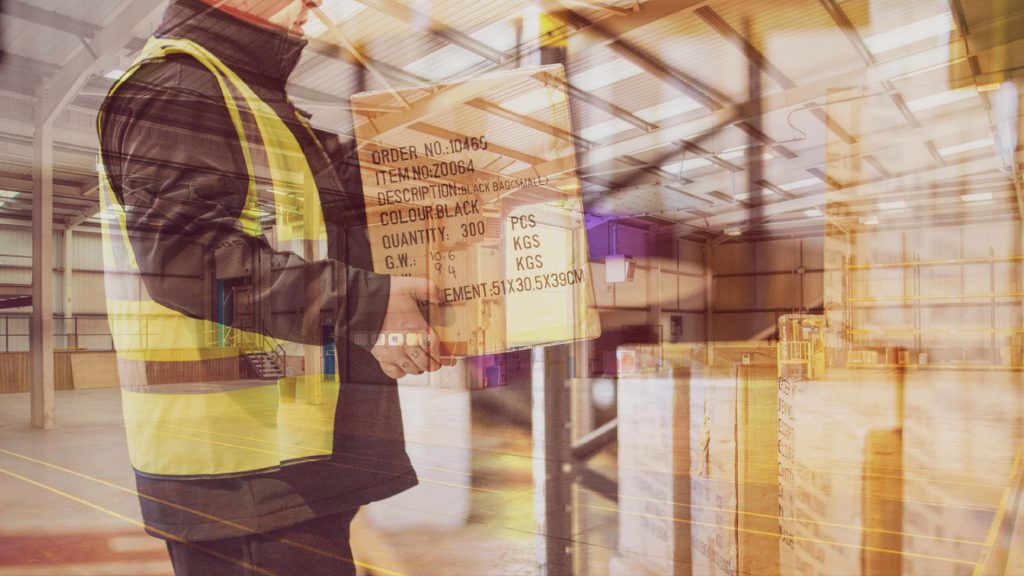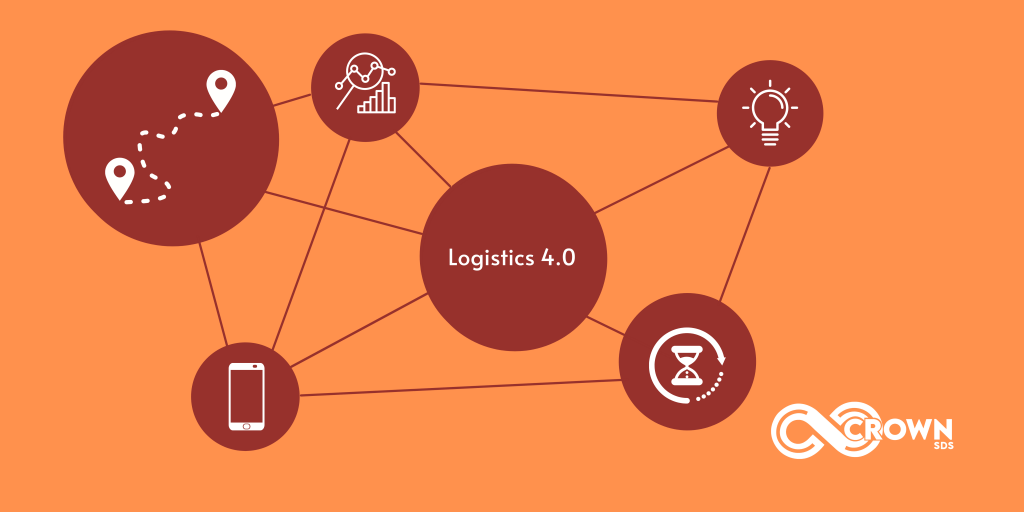The fourth industrial revolution is coming, is your business ready?
The Fourth Industrial Revolution, or Industry 4.0, refers to the ongoing automation and digital transformation of traditional manufacturing and industrial practices, using modern, smart technology. Although still in the early stages, its progression is inevitable. Businesses are looking to adapt their supply chain, warehousing and transport operations to stay ahead of the movement.
Encompassing the same themes as Industry 4.0, including interconnectivity, automation, machine learning and real-time data, Logistics 4.0 dives deeper into the technological developments and logistics technology, within end-to-end logistics process and supply chain management.
When we talk about adoption of autonomous technology within logistics, you might consider picking robots, driverless transport and delivery drones. But logistics 4.0 is about so much more than diving in head first to adopt dramatic new logistics technology (especially whilst there remains a lack of clarity and uncertainty around which of the new technologies will triumph). It’s about finding better ways to make smart supply chain decisions, in order to gain competitive benefits.
Whilst robots and cobots will continue to support the future of logistics, it’s widely felt that not all actions can and should be automated. “You can leverage technology to support things, but there are still humans required in decision making and in some processes.”
The aim of Logistics 4.0 is not to replace humans with automated logistics systems, but to enhance flexibility to market changes. When logistics technology is used in combination with the human element, it remains to offer a high level of value that will continue to drive benefits for businesses in the future.
Processes that apply a partial transfer of autonomy, retain the valuable aspects of the ‘human touch’, enabling humans to work smarter, more efficiently and with greater speed and accuracy – which is key in an increasingly real-time economy.
The Internet of Things for Smarter Logistics
In a progressively fast-paced economy, and with rising pressures across the supply chain, the Internet of Things (IoT) has become a critical component for logistics companies in meeting customer demand. IoT is the creation of a network of connected devices, gathering and sharing data, changing the way we do things such as shop or manage inventory.
Enabling global connectivity of everything from people to products, the IoT is paving the way for smarter logistics; enabling items to be tracked in real-time and providing better opportunity for data-driven decisions that can improve operational efficiency.
Incorporating smart connectivity into logistics using fleet management and shipment & tracking solutions, can greatly improve the speed and accuracy of transportation. This in turn can drive more efficient operations through enabling enhanced routing and vehicle tracking, improved driver performance, increased fuel efficiency, real-time visibility, detection of traffic issues and eliminating unnecessary mileage.
And sharing data between vehicles and fleet controllers, maximises productivity and efficiency by:
- Amplifying data analysis by aggregating trends
- Highlighting areas of concern
- Streamlining the connection between vehicle data and the company’s overall data network
- Gaining an accurate operational picture for better informed decision-making
Empowering businesses to make data-driven decisions, through connecting people to real-time information is leading to smarter and more efficient operations.
The Age of the Smart Warehouse
Warehouse logistics includes all activity such as receiving, storage, picking and packing, accumulation and consolidation, sorting and shipping. Looking to create better efficiencies in your warehouse logistics? Consider smart warehousing solutions.
A smart warehouse uses the IoT, warehouse management software and other technology to automate workflows and drive efficiencies. This way, machines, computing devices, and objects are linked into a single network whereby businesses can transmit the instantly-collected data, analyse it and use it to their benefit.
When warehousing operations are optimised through smart warehousing and integrated solutions, it optimizes the capabilities of man and machine through a collaborative relationship, driving a wealth of major benefits for businesses:
- Increased warehouse space utilisation
- Storage location optimisation
- Stock management
Warehouse management systems (WMS) have become incremental in overseeing assets, allowing better inventory control and reducing waste. When synced with automated, semi-automated and mobile platforms, WMS systems form the hub of a giant digital operation, collecting and sending data to ‘humans’ for the benefit of continuous improvement. Even by simply removing small but lengthy tasks, such as filling in manifests to confirm proof of delivery (POD), delivery has become seamless with intelligent touchless barcoding technology.

Adopting a Collaborative Approach – Harmonising Humans & Technology
Moving into the fourth industrial revolution, isn’t simply about investing in the latest technology. It is the way in which logistics and supply chain management can adopt technology as a support function for its people, to make smart supply chain decisions and in turn, meet the evolving needs of its stakeholders.
At Crown SDS, our longstanding approach to logistics service is one that encompasses enhanced collaborative intelligence – people working in harmony with artificial intelligence (AI). And whilst performance and speed are crucial to meet customer’s needs, our customers also rely on a quality service that can adapt and evolve according to accurate, real-time data. Something which can be achieved using data-gathered by smart logistics technology, and put into action by people.
“The consumer trend of same day delivery and next day delivery is coming into the forefront more than ever before. In choosing a commercial courier, the decision is becoming increasingly focused on speed and availability, over price. Whilst our focus at Crown is about providing an agile service, even whilst operating at peak capacity, investing in technologies that enable us to rely more on automation has meant we can increase the scale of our operation quickly, to meet the spike in demand”. Steve Rushton, Director and General Manager at Crown SDS
What we create at Crown SDS are bespoke logistics solutions, designed and delivered by experienced teams, incorporating smart logistics technology to ensure responsiveness, adaptability, scalability and flexibility, within our transportation and warehousing services.

